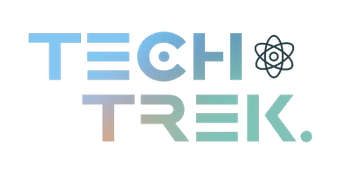Nuclear Clocks: The Next Big Breakthrough in Humanity's Ability to do Timekeeping
- TechTrek Admin

- Mar 10
- 4 min read
Updated: Apr 22
By George Cavanna,
The Lawrenceville School, NJ
Humans measure time in many ways, with clocks, stopwatches, electronic timers, sundials... But did you know that you could tell time with atoms? Scientists have recently discovered the nuclear clock. Nuclear clocks are tiny clocks that use light to elevate atomic nuclei into an excited state, which can keep time with extreme and unprecedented precision.

Our most precise clocks today are atomic clocks. An atomic clock works by using an atom. The most used atom in nuclear clocks is Caesium-133. All atoms have a nucleus with protons and neutrons. Surrounding these atoms, there is a sea of electrons. We can think of these electrons as akin to the rings in our solar system. The nucleus would be the sun, with different rings and planets/electrons surrounding it. These electrons can be excited when we shine a laser tuned to a specific frequency. When an electron becomes excited, it moves and releases the energy, creating light. All clocks have some sort of ‘tick’ called an oscillator. Light can oscillate at a specific interval because light is in waves. One of the Laws of quantum mechanics is that the energy and frequency of light are directly related. In other words, the energy from the laser makes the electron gain, move, and then release energy, which creates light, that scientists can measure. The most precise atomic clock is JILA, which measures billionths of a nanosecond or 18 digits past the decimal point. It loses only one second every 40 billion years. Nuclear clocks work similarly, but instead of the electrons gaining energy, the nuclei of the atom change energy levels, which can tell the exact time.
Nuclear clocks were always thought of as challenging or even impossible to build. This is because the nucleus of the atom comprises very tightly packed neutrons and protons. This is good because the ‘ticks’ from the energy changes will be more stable than atomic clocks. However, the strength has a downside. Since the bonds are so tight, energy jumps require almost gamma-ray energy levels to make the nuclei go to an excited state. Gamma rays are impossible for humans to create. But for some reason, the exceptionally rare radioactive isotope thorium-229 has nuclei that can be excited by a tuned frequency of UV light. This led to the first-ever nuclear clock created at the University of Colorado Boulder. However, this nuclear clock can only measure 12 digits, which is less precise than most atomic clocks today. This is not the end for nuclear clocks because, eventually, they will surpass Atomic clocks. We can compare atomic clocks to when the first cars came out. Sure, the cars were slower than the horse-drawn carriages, but eventually, cars grew faster than old methods.

Although Nuclear clocks may not be better than atomic clocks, they still hold many advantages. The rings in which electrons move can vary in their energies. Slight changes in electrical and magnetic fields can move these rungs, making the light tick differently. Eventually, this would result in the clock losing its ability to mark time constantly. Again, atomic clocks use electrons to keep time, which does not compare to the bonds between nuclei, which are more stable and steady. Nuclear clocks are much more reliable and can stay consistent longer than atomic clocks. So, eventually, these new clocks will become more accurate than modern atomic clocks. Nuclear clocks do have downsides. Thorium is the only known isotope with low transition energy, making nuclear clocks possible. Thorium-229 is very rare and hard to get. This means the number of nuclear clocks we can build will be limited until we find a new substance or find ways to produce more Thorium-229.
We can use the technology of nuclear clocks to improve much of modern technology. The main advantage is extreme precision. We can use the precise timing of nuclear clocks for better GPS and other positioning systems. This could be like a spacecraft navigation system. According to the Scientific American, this new technology could also help us understand dark matter. Dark matter is 85%of the matter in the universe, but we do not understand it. “All those forces which are yet not well explained, or for which the origin is unknown, could appear in the comparison of frequencies of clocks,” says Crespo López-Urrutia, a professor at the Faculty of Physics at Heidelberg University. Nuclear clocks are the future of understanding the phenomena that go into our everyday lives and the universe.
----Works Cited
Parshall, Allison. “The World’s First Nuclear Clock Could Unlock the Universe’s Dark Secrets.” Scientific American, 11
Sept. 2024, www.scientificamerican.com/article/the-worlds-first-nuclear-clock-could-unlock-the-universes-dark-secrets/. Accessed 19 Sept. 2024.
Schultz Issac “Scientists Reveal the World’s First Nuclear Clock.” Gizmodo.com, 2025, gizmodo.com/scientists-reveal-
the-worlds-first-nuclear-clock-2000494621. Accessed 5 Jan. 2025.
“José R. Crespo López-Urrutia Fellow of the American Physical Society.” Mpi-Hd.mpg.de, 20 Oct. 2022, www.mpi-
hd.mpg.de/mpi/en/public-relations/news/news-item/jose-r-crespo-lopez-urrutia-fellow-of-the-american-
physicalsociety. Accessed 5 Jan. 2025.
SciShow. “The Nuclear-Powered Clocks of the Future.” YouTube, 10 Aug. 2023, www.youtube.com/watch?v=a6sy05LK-
nw. Accessed 5 Jan. 2025.
%202_e.png)





Comments